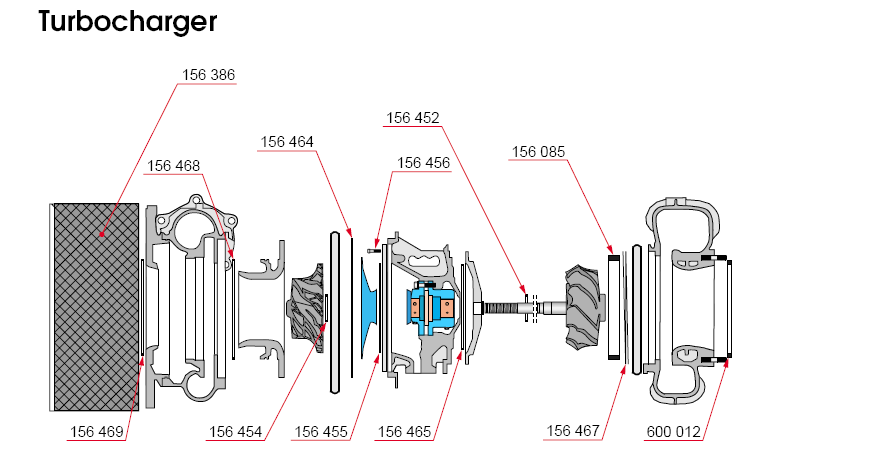Turbocharger is an integral part of the ship’s marine engine as it reuses the exhaust gases in order to increase the overall efficiency of the engine. It consists of two parts – blower and turbine sides, which need equal attention while carrying out routine maintenance procedures.
Mentioned below are ten points that must be considered while handling turbochargers in ship’s engine room.
Checks:
1. Keep a Close Catch on All Turbo Charger Parameters : This is obvious, but watch-keeping officers often forget to check important parameters while taking rounds or overlook them in haste. While monitoring the turbocharger, following points must be checked:
- Speed of the turbocharger
- Exhaust gas inlet and outlet temperatures
- Cooling water inlet and outlet temperatures
- Turbocharger lube oil pressure and temperature
- Differential air pressure in manometer at the compressor side
2. Keep a Track On the Sound of Turbo Charger– Sound is one of the best ways to identify any machinery problem. Any kind of abnormal scratching sound indicates problem in the reciprocating parts of the turbocharger. Moreover, howling sound indicates chocked inlet or air passage, which leads to surging of turbocharger.
3. Check Vibration: Turbochargers are high speed rotating machines. In fact, some of them achieve speed higher than any other machinery onboard ship. Hence, they have natural vibration frequency.
Engine bracing is done near turbocharger to transfer such vibrations to the ship’s structure. If the vibration increases abnormally, stop the engine as it may be due to worn out bearings, abnormal “K”value or loose foundation bolts.
4. Check For Exhaust Leakage: Turbocharge handles extremely high temperature gases. The inlet is from the engine and the outlet connects exhaust pipes to the funnel. These two points are flange-connected with a distance piece in between. It is important to ensure that there are no exhaust leakage from these joints as it may lead to fire or smoky atmosphere inside the engine room.
5. Check leakage of Sump Oil: In turbo chargers with separate oil sump, keep constant checks on the oil level and temperature. In some ships it has been reported that, due to leakage in the turbine side casing, the oil comes in contact in hot spots on the engine body and with the exhaust gas. Such incidents have lead to fire in the engine room.
Maintenance
6. Intake Filters: Marine turbochargers come with mesh filters to avoid any particles, moist oily air mixture etc. from going inside and fouling/damaging the compressor turbine. It is recommended to put an extra felt filter over the turbocharger compressor to absorb oily air mixture as such filters can be changed frequently. The fitted mesh filter must be chemically cleaned bi-monthly or as per the running hours described by the manual.
7. Turbocharger Washing: The Turbocharger turbine and compressor sides must be cleaned regularly as per makers recommendations.The cleaning of the turbine and blower sides is carried out to remove carbon, soot, and other exhaust deposits.
8. Soot Blow: The turbocharger performance will get affected if the exhaust passage after the turbocharger is in foul condition (exhaust trunk and economizer). It may lead to surging or even breakage of turbine blades. Therefore it is recommended to soot blow the exhaust gas boiler tubes on daily basis.
9. Power Distribution: The turbocharger is driven by the exhaust gases produced by combustion process inside the engine cylinders. As engine comprises of multiple cylinders, it is important that their is power balance among all the cylinders. If one cylinder is producing more power due to malfunctioning of fuel valve, it will lead to surging of turbocharger’s turbine side. Proper care must be taken to ensure even power distribution in the ship’s engine.
10. Check Clearances: When the turbocharger is opened up for overhauling, all important clearances like casing and blade tip clearances, “K” value of the shaft, which determine the correct alignment of the shaft, and proper operation of the labyrinth seal which is fitted between the impeller and exhaust shield must be taken.
The above mentioned are some of the important points that must be considered while handling turbochargers in the ship’s engine room.
